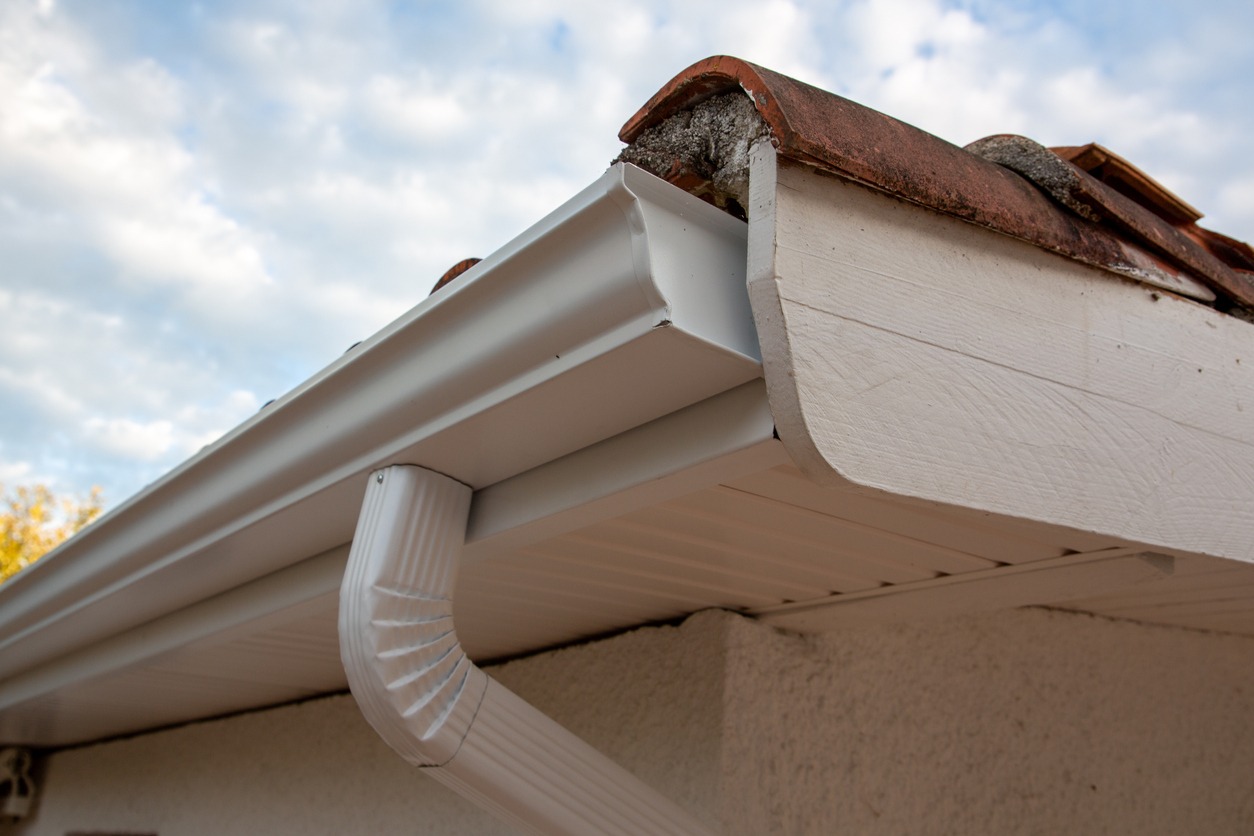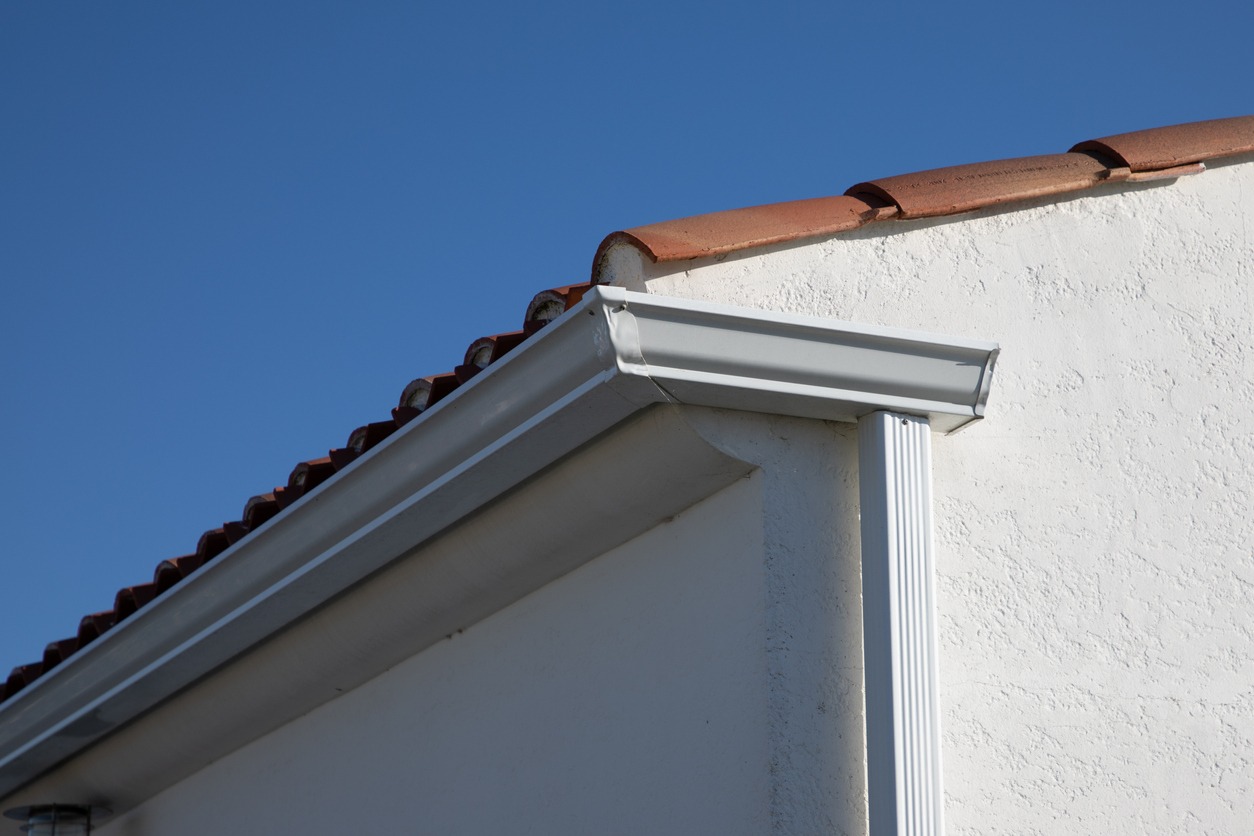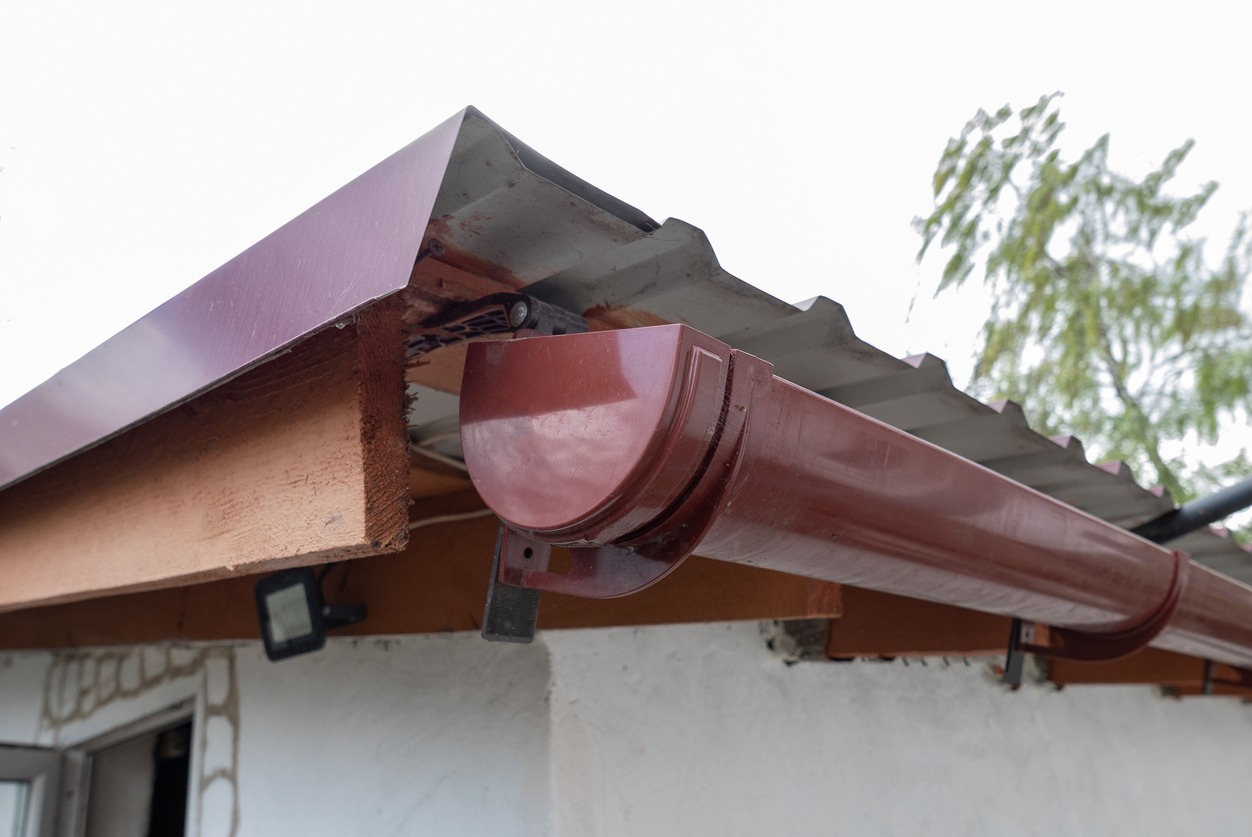You probably rarely think of gutters, but they are essential for protecting your home from the elements. They direct rain away from your roof and your house, so it doesn’t cause trouble like mold and mildew. But despite being simple, gutters aren’t just plain pipes. They come in different styles and materials that an average homeowner may not know.
If you’re looking to get new gutters installed in your house, it helps to learn about the different styles and materials to help you decide the best gutter for your home.
Why Do Houses Need Gutters?
Gutters do the important work of guiding rainwater away from your house and channeling it to designated drainage areas. It helps prevent mold and mildew that can cause damage to foundations and sidings. Gutters even save your basement from flooding and protect your yard from getting trenched or eroded.
Are Gutters Always Necessary?
Before installing one, figure out if your house really needs gutters. Most houses do, but there are exceptions. Here’s how to tell:
- If your roof has none or a little overhang, water can sneak into your house or damage the flower beds or walls near the foundation. Gutters are a must here.
- If your roof has a big slope and sticks out a lot, water naturally flows away from your house and does not drip against the foundation. You might not need gutters in this case, especially if rainy storms are not common in your area.
- If your house is higher than the ground around it, water won’t pool near it, so gutters might not be necessary. But if your house is a bit lower, you’ll need gutters to channel runoff at a sufficient distance from your foundation.
- If your house is surrounded by concrete, like patios or walkways, gutters might not be needed because the concrete serves as a protective layer between the foundation or runoff.
- You might not need gutters if you live in a very arid climate.
Seamed vs. Seamless Gutters
Gutters are either seamed (regular) or seamless. There are many benefits and differences to both, and discover them here:
Seamed Gutters
Seamed or sectional gutters come in 10-foot pieces designed to attach right to your home’s fascia board using hangers. You can find these in vinyl, aluminum, galvanized steel, copper, or zinc, although pros should handle installing galvanized steel, copper, and zinc versions.
Seamed gutters also offer half-round, K-style, box-style, and custom fascia shapes, depending on your preference. If you’re into DIY, seamed gutters are budget-friendly and generally cost less than seamless ones. The material type can affect the overall price.
An advantage of seamed gutters is that if one part gets damaged, like in a storm, you only need to swap out that 10-foot bit instead of fixing or replacing a whole, seamless gutter system.
Seamless Gutter
Just like the name says, seamless gutters are made to be a single piece instead of getting separate sections that need to be assembled during installation. While seamed gutters come in clear 10-foot chunks, seamless ones have almost no length limit.
Gutter experts can whip up seamless gutters of nearly any length because they use a mobile shop to make custom gutter rolls, perfectly sized and shaped for your home. The process starts with a big roll of aluminum. It goes into the machine and comes out on the other side as a gutter.
Seamless gutters cost more, but the gutter system is superior to a seamed one. Seamless gutters are super resistant to leaks, and some companies might even make a custom gutter roll-out just for you and let you set it up.
The main downside to seamless gutter systems is they usually only come in rolled aluminum, unlike seamed gutters, which can be available in many different materials.
Different Gutter Styles
Gutters come in different types and styles. Take a closer look at each kind below.
K-Style Gutters
K-Style gutters are the most common type of gutter used in modern homes, featuring a unique front edge that mimics crown molding – a sleek touch that complements your home’s appearance. They have a flat back and are snug against the fascia board, the top trim of your home, preventing water from running down your walls. The bends and folds in the metal add durability, making them sturdier than half-round gutters. They are available in sizes 5″ and 6″, with 5″ being the industry standard.
These gutters, named after the “K” shape they simulate, are designed for strength and style. They can carry more water than half-round gutters, making them perfect for homes nestled in rainy climates. However, they are more challenging to clean because their inner angles can collect lots of debris. The top lip can even collect mold and mildew.
If you choose K-style gutters, it’s a good idea to invest in a gutter guard and keep a regular cleaning schedule to prevent clogs and blockages. This will ensure your K-style gutters perform their best and keep your home looking great.
Pros:
- Most cost-effective option
- Easiest to install
- Sturdier than half-round
- Handles more water during heavy rain
- Modern appearance complements your home
Cons:
- More likely to get clogged
- Can corrode over time
- Harder to clean due to smaller inner angles
Half-Round Gutter
Half-round gutters bring a touch of history and sophistication to older homes, as it stands out with their semicircular design and curved edge. They’re like half of a pipe, letting water flow smoothly through their open top. These gutters are often found in homes built before 1960, especially in older neighborhoods.
These gutters are known for their rustic charm, and they’re usually made from copper, which develops a beautiful patina over time. But you can also get them in aluminum, vinyl, or galvanized steel. Just like K-style gutters, they are available in 5″ or 6″ sizes.
Installing half-round gutters is a bit different than normal gutters. First, special brackets are attached to your roof’s edge. Then, the half-round gutter is fitted in place and secured. Copper gutters are heavier, so they need extra hardware to stay put.
The smooth, half-circle inner part of these gutters has some advantages. It’s less likely to rust or corrode because water doesn’t pool up. Also, debris has a clear path, reducing the chance of clogs.
Pros:
- Rustic and charming look
- Easier to clean and less likely to rust
- Debris is less likely to clog
Cons:
- Can be pricier
- Installation takes longer, which means higher labor costs
- Not as efficient in heavy rains as it handles less water
- Less sturdy than K-Style and more susceptible to damage
- Heavier and can come loose over time
Fascia Gutter
Fascia gutter is your best bet if you’re looking for a seamless, modern appearance. These are custom-made gutters crafted by pros who’ll work closely with you to make a gutter system made of one long piece of aluminum. Fascia gutters are perfectly sized to match your home’s measurements and roof pitch. But remember that the sleekness comes at a price – you might pay around twice as much compared to half-round or K-style gutters (which you can install yourself).
Pros:
- They can handle heavy water flow due to their larger size
- Firmly attaches to your home’s fascia board
Cons:
- Installation can be tricky, so professional installation is necessary
- Custom-made design makes it more expensive
- You might need to clean them more often because of their increased width
Box-Style Gutters
Box-style gutters are like the heavy-duty options of the gutter world, as it is usually seen in commercial or industrial buildings. However, these sturdy gutters can also be tailored for residential homes, especially if you need some serious water-wrangling power. These gutters are designed to handle heavy rainfall and come in sizes like 7″, 8″, or even as big as 10″ widths. But remember, you’ll need a bigger roof to make them fit.
What sets box-style gutters apart is how they snugly fit under your roof’s shingles, unlike traditional gutters that are hung on the edge. This means they have to be put in during your home’s construction. They ensure that not a single drop of water sneaks into your home along the roof edge. If you’re considering these for an older building, you might need a redo of your roof with new shingles.
Pros:
- Stands strong against heavy downpours
- Extra durable compared to other gutter types
Cons:
- Among the priciest gutter options
- Lacks aesthetic appeal
Different Gutter Materials
Vinyl and aluminum are two of the most popular gutter material options, though many other options are available. Read about the most popular types of gutter materials below:
Wood Gutters
Wood gutters bring a touch of character to your home, especially if you have a historic home. These gutters have the power to elevate your home’s exterior with a luxurious appeal. However, these types of gutters demand regular attention. Yearly staining or painting is essential to preserve their visual allure, and their interiors need water-resistant oil. Without proper upkeep, wood gutters will rot. This is why wood is not used in gutter systems in modern homes.
Vinyl Gutters
Vinyl gutters are a common and accessible option for many homeowners. Crafted from plastics and PVC, these gutters are favored for their simple installation and value for money. Dents in vinyl gutters often pop back into place on their own, and they’re quite durable overall. They also come in many different colors.
While they are budget-friendly, it’s important to note that they are not the most robust material – their average lifespan is around 10 to 20 years. Vinyl gutters may deteriorate faster in damp climates. If your location tends to receive lots of rainfall, you might want to explore alternatives like metal gutters such as steel or copper.
Aluminum Gutters
Aluminum gutters are a great option for DIYers due to their manageable weight and resistance to rust. Their average lifespan ranges from 20 to 30 years, but they are more vulnerable to cracking compared to other metal gutter options.
Dents, while manageable, can mar the appearance of aluminum gutters. Small dents can be popped back into place, but substantial damage from falling branches might cause the gutter to need replacement.
Galvanized Steel Gutters
Galvanized steel gutters are known for their durability and last longer than their aluminum counterparts. These gutters excel in demanding conditions, especially in wet climates that receive heavy rainfall. They last about 20 to 30 years but are susceptible to rust.
However, their installation requires a skilled touch due to its need for soldering, so it’s not a good choice for DIYers. Also, they are much heavier, which can strain gutter hangers and can make them come loose more easily.
Zinc Gutters
If you’re seeking a low-maintenance gutter option, pre-weathered zinc gutters stand as an excellent choice. These gutters are immune to rust and incorporate a self-sealing patina, preventing scratches and cracks from debris impact. With their sturdy construction, zinc gutters have an extended lifespan. You may save money in the long run as it would be less likely to need gutter repairs or replacements, and their average lifespan is 80 years.
However, zinc is not a good choice for cedar-shingled roofs or regions with salty air. It requires professional installation, with joints and ends requiring welding. This material’s high price is why it’s usually used for historic or high-end homes.
Copper Gutters
The most expensive gutter material that you can buy is copper gutters. It’s extremely durable –unfazed by even the most extreme climate conditions. It can last up to 100 years if properly installed.
Most of these gutters are available in half-round style, as they were popular in older homes to complement the more traditional look. It creates a distinctive patina over time, so it will end up turning green. However, they aren’t suitable for DIY installation.
Essential Gutter Terms to Know
It’s a benefit to know the essential parts of a gutter or words relating to it when you need it installed in your home, so here are some key terms to learn:
- Downspout: A vertical pipe that carries rainwater from the gutters down to a drain or the ground.
- Downspout Elbow: Angled piece at a downspout’s base, redirecting water away from the home’s foundation.
- Drainage: The system of gutters and drainpipes that guides rainwater away from your home’s siding and foundation.
- End Caps: Sealant-fitted caps on each gutter’s end.
- Fascia board: A horizontal flat board along your roof’s edge, capping roof rafters and providing a base for attaching gutters.
- Hanger: A metal bracket on the fascia board securing the horizontal gutter section.
- Mitered Corner: Gutter piece fitting at your roof’s corner.
- Pitch: The angle at which the gutter slopes, directing rainwater towards a downspout for proper drainage.
- Seams: Connections between individual gutter lengths that require a sealant to prevent leaks.
- Section: A measurement unit for each gutter piece.
- Splash block: A plastic or concrete surface under a downspout, diverting water away from your home’s foundation.
Picking the Right Rain Gutters
When it comes to selecting a new rain gutter system for your home, it’s crucial to familiarize yourself with the various styles, shapes, and materials available before making your final choice. If you’re up for a DIY project, seamed gutters are a good option as they’re more user-friendly than seamless ones. Remember that certain gutter types, like copper and zinc, are better suited for professional installation.
Likewise, if you opt for box-style gutters, enlisting a professional is essential for retrofitting them to a residential setting. For a swift and straightforward DIY setup, aluminum or vinyl half-round or K-style gutters are recommended. This approach can also help keep installation costs down, but it’s worth noting that aluminum, vinyl, and galvanized steel gutters tend to wear out faster than copper or zinc.
Ultimately, you’ll need to decide between seamed and seamless styles. Choose from shapes like half-round, K-style, custom fascia, or box-style. Lastly, select a material – options include vinyl, aluminum, galvanized steel, zinc, and copper. Consider factors such as cost, ease of installation, and the average lifespan of each option before reaching a final decision.
Common Questions About Gutters
How much does gutter installation cost per foot?
The cost of installing gutters varies depending on the material. Vinyl gutters typically range from $3 to $5 per linear foot, while aluminum gutters can cost between $6 and $12 per foot to install. Copper gutters, known for their premium quality, can run as high as $40 per foot for installation. Complicated architectural or added structural features may increase the overall costs.
What is the lifespan of gutters on a house?
How long a gutter lasts depends on the material they are made from. Vinyl gutters have a relatively short lifespan of around ten years, while copper gutters are exceptionally durable and can last up to 100 years. The most commonly used material, aluminum, has an average lifespan of approximately 25 years.
How can you fix sagging gutters?
Addressing sagging gutters can be approached in a couple of ways. First, check the tightness of your gutter spikes and replace or tighten any loose ones. Alternatively, you can use gutter hangers in areas where sagging occurs or adjust the screws on existing hangers that may have become loose over time.
Is it possible to replace the roof without changing the gutters?
Yes, it is possible to replace the roof without replacing the gutters. While many homeowners choose to replace both components simultaneously, it’s not mandatory. It’s advisable to consult with your roofing professional to ensure mutual understanding and coordination before the project begins.
Conclusion
All types and styles of gutters share the same fundamental purpose. The size of your home and roof plays a significant role in determining the appropriate gutter size, and the architectural details will dictate the best style suitable. Do thorough research to identify the style and type of gutter that best suits your specific needs and enhances the visual appeal of your home.





